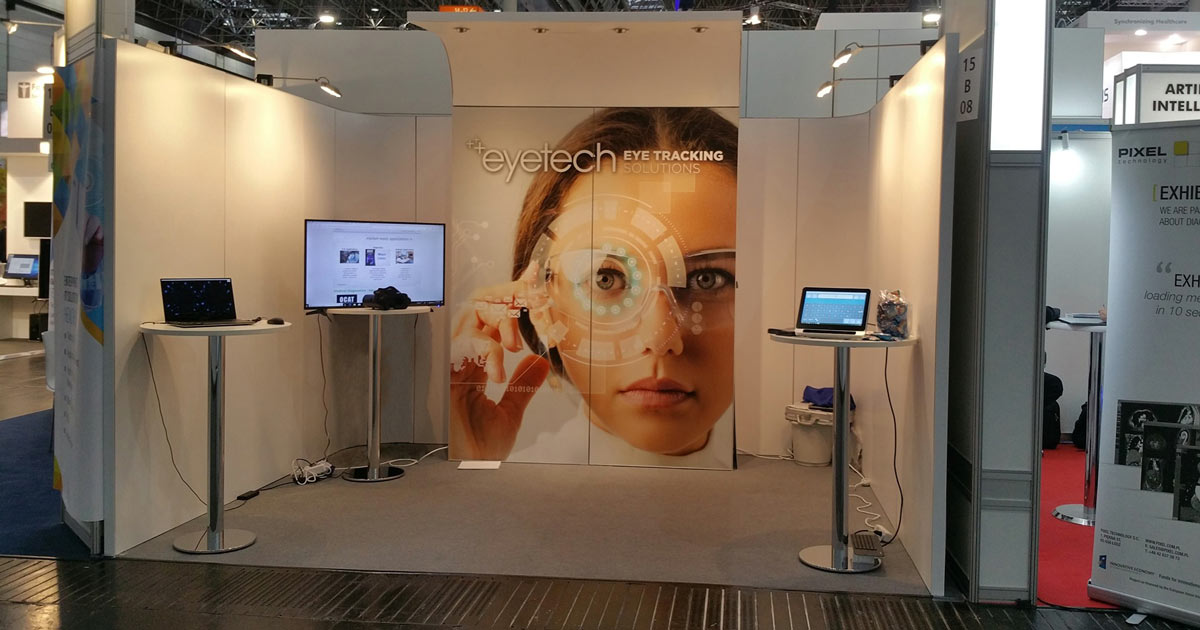EyeTech Digital Systems Founder and Chief Science Officer Robert Chappell recently sat down with Jim Tate, host of The Tate Chronicles radio show on HealthcareNOW Radio, to discuss emerging technologies that hold potential to bring beneficial disruption to healthcare. The discussion centered on innovative use cases for precision eye-tracking technology in the field of medicine. Although the technology has existed for some time, with EyeTech pioneering one of the earliest platforms in 1996, eye gaze tech is still in the early stages of wider adoption and broader use cases.
Eye Tracking’s Role in Medical Diagnostics
During the interview, Chappell and Tate touched on key areas where eye-tracking technology holds great promise in healthcare. Medical diagnostics is at the top of that list. As Chappell put it, “Problems in the brain almost always show up in eye tracking.” Leveraging eye-tracking tests in screening diagnostics can offer clinicians a non-invasive mechanism for detecting neurodegenerative conditions such as Alzheimer’s, autism, dementia, and Parkinson’s earlier. Chappell shared the story of a close friend who suddenly began having trouble with her vision. After months of tests, that friend was ultimately diagnosed with a brain tumor. “Had she been doing eye-tracking tests, her condition could have been diagnosed weeks earlier,” Chappell stated.
Eye-tracking tests typically track three measures:
- Fixations – holding a steady gaze (similar to having a staring contest)
- Saccades – rapid eye movement from one point to another (envision playing whack-a-mole)
- Smooth pursuit – tracking something steadily moving (watching a bird fly, for example)
Chappell noted that problems with the brain typically impact these eye functions and show up in subtle variances in movements. He also pointed out that these impairments won’t typically show up in traditional diagnostics like MRIs. Eye-tracking tests offer less invasive and more cost-effective diagnostic screening options. Chappell sees ample opportunity for eye-tracking to bring positive disruption to medical diagnostics in the coming years, particularly as the technology continues to evolve. “Eye tracking offers objective numbers and data,” said Chappell. When coupled with artificial intelligence (AI), as EyeTech’s EyeOn device is, eye-tracking platforms have the ability to “recognize patterns and classifications within the data,” leading to much quicker, more specific diagnoses.
Listen to the full radio interview here.
Eye Tracking’s Role in Promoting Health Equity
One of the more widely known use cases for eye-tracking is within the field of assistive technology. Eye gaze technology has long been used in augmentative and alternative communication (AAC) and speech generating devices to bring greater equity to nonverbal and physically impaired individuals through the enablement of independent communication and environmental control. That same technology can also play a tremendous role in bringing greater health equity to care delivery.
In a follow-up article with Health IT Answers, Chappell elaborates on eye-tracking technology’s ability to help reduce disparities in healthcare access. In the article, he draws a parallel between the social isolation and limited engagement experienced by many during the COVID-19 pandemic and the day-to-day limitations experienced by those with physical impairments. “Communication is what connects us all,” Chappell writes. “Throughout the pandemic, technology offered one of the few mechanisms communities had to overcome physical distance barriers. Things like remote learning and telehealth were embraced as a new means to carry on.”
“The pandemic also brought newfound attention to the magnitude of health disparities among different patient populations. In the telehealth arena, many healthcare providers worked to integrate interpreter services into virtual care to support the needs of limited English proficient patients. As the healthcare industry continues its work to improve health equity and access for all patients, it’s important that we consider the needs of our disabled community, as well.” Chappell encourages healthcare providers to incorporate eye-tracking into access models to better support the unique needs of this community.
“Eye gaze technology is rapidly evolving,” Chappell concludes. “We’re only beginning to scratch the surface on use cases in healthcare and beyond. It truly has the power to change care delivery, improve care access among the disabled community, and help level the playing field in care equity.”
Read the full article here.



